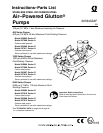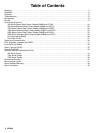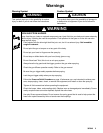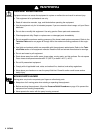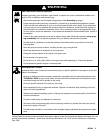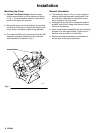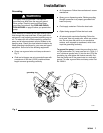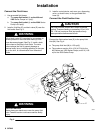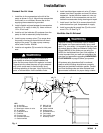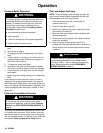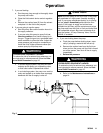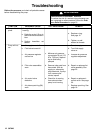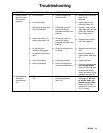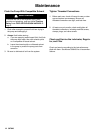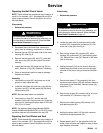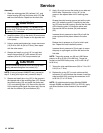
307843 5
WARNING
FIRE AND EXPLOSION HAZARD
Improper grounding, poor ventilation, open flames, or sparks can cause a hazardous condition and
result in a fire or explosion and serious injury.
D Ground the equipment and the object being sprayed. See Grounding on page 7.
D Proper hose grounding continuity is essential in maintaining a grounded spray/dispense system.
Check the electrical resistance of your air and fluid hoses at least once a week. If your hose does
not have a tag on it that specifies the maximum electrical resistance, contact the hose supplier or
manufacturer for the maximum resistance limits. Use a resistance meter in the appropriate range
for your hose to check the resistance. If the resistance exceeds the recommended limits, replace it
immediately.
D If there is any static sparking or you feel an electric shock while using this equipment, stop spray-
ing immediately. Do not use the equipment until you identify and correct the problem.
D Provide fresh air ventilation to avoid the buildup of flammable fumes from solvents or the fluid
being sprayed.
D Keep the spray area free of debris, including solvent, rags, and gasoline.
D Electrically disconnect all equipment in the spray area.
D Extinguish all open flames or pilot lights in the spray area.
D Do not smoke in the spray area.
D Do not turn on or off any light switch in the spray area while operating or if fumes are present.
D Do not operate a gasoline engine in the spray area.
HAZARDOUS FLUIDS
Hazardous fluid or toxic fumes can cause serious injury or death if splashed in the eyes or on the skin,
inhaled, or swallowed.
D Be sure all fluids and solvents used are chemically compatible with the wetted parts shown in the
TECHNICAL DATA for your pump model. Always read the fluid and solvent manufacturer’s litera-
ture before using the fluid or solvent in this pump.
D Know the specific hazards of the fluid you are using.
D Store hazardous fluid in an approved container. Dispose of hazardous fluid according to all local,
state and national guidelines.
D Always wear protective eyewear, gloves, clothing and respirator as recommended by the fluid and
solvent manufacturer.
D Provide for safe piping and disposal of exhaust air.
D Secure the fluid outlet house tightly into the receiving container to prevent the hose from coming
loose and creating a fluid spill.
D Provide proper ventilation in accordance with accepted industry standards and government regula-
tions.
United States Government safety standards have been adopted under the Occupational Safety and Health Act. You
should consult these standards – particularly the General Standards, Part 1910, and the Construction Standards,
Part 1926.



